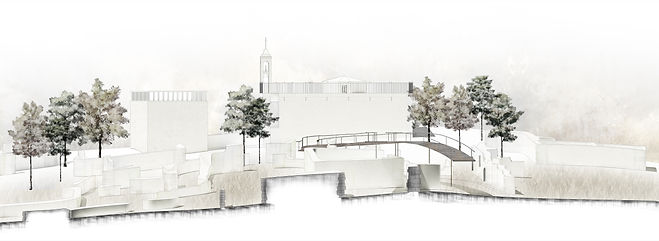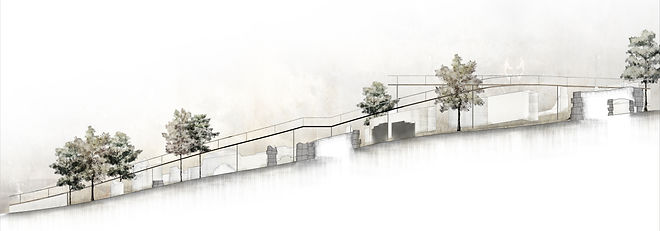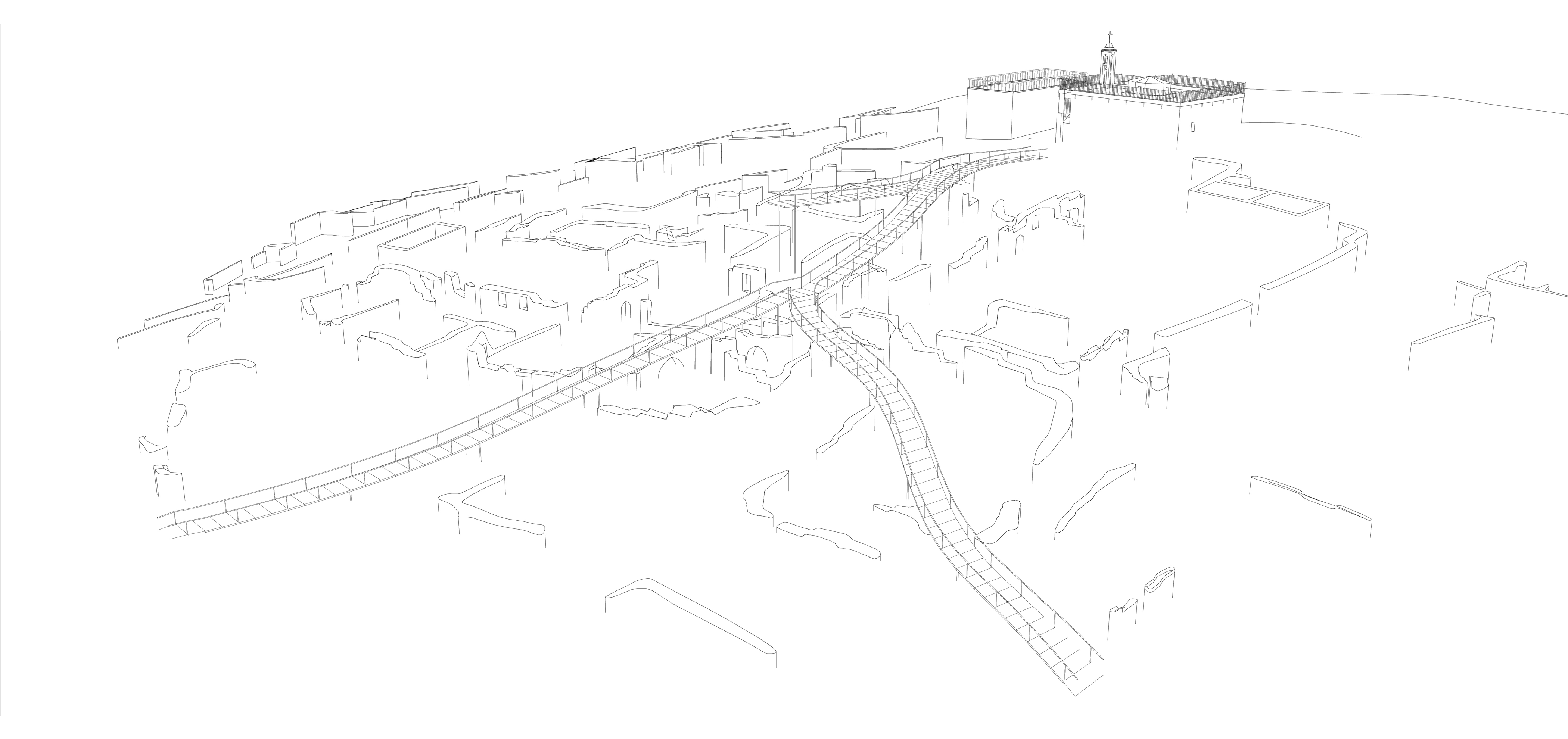LIOR SKOURY

Space Time
The human / social desire to create places that can contain the exception, and in fact to 'normalize' the rest of the space, has led to the creation of new spaces with a unique set of rules. These spaces are in contrast to the larger space surrounding them, as well as to other spaces like them. Ostensibly, they may seem to me like any other place, but as I enter them, I am excluded from the rest of the space.
My meeting with Kibbutz Baram, Kfar Bir'im, and the territories surrounding them exposed me to various imprisoned spaces side by side and opposing each other. Although the area is small, there is a large and complex attempt to "normalize" the space.
There, time takes on a different meaning. In certain cases, such as the village or the national park, it can accumulate layers on top of layers until it cannot be measured and has no meaning for the past, present or future. In other cases, such as the pilgrimage of the old residents, the village is defined and organized by a specific period of time, and when that passes, the space deconstructs and returns to its original state.
I encounter it on the kibbutz, but more interesting is inside the village, where there is physical exclusion (the church), within physical exclusion (the national park), within the exclusion that is partly physical and partly conceptual (village) where each of the spaces receives characteristics and character that embody a narrative and project it onto the environment.
The project was created as part of 4th year studio at Bezalel.
Advisers: Nili Renana Harag
Year: 2016



The municipal areas of the kibbutz
The built-up areas of the kibbutz and the old village.
The peak of the topographical height in the areas of the village and the kibbutz.
Bar'am is a village whose residents were evacuated during the war in 1948 with the promise that they could return after the war.
Since the war, more than 70 years have passed, but the residents have yet to return. The village became part of the kibbutz established next to it, and the old homes were left to crumble. Only the cemetery and the church remain, which are still active.
Each year, the descendants of the original residents make an annual pilgrimage in memory of the village and to raise awareness of the situation of the original villagers and their families who remain displaced.






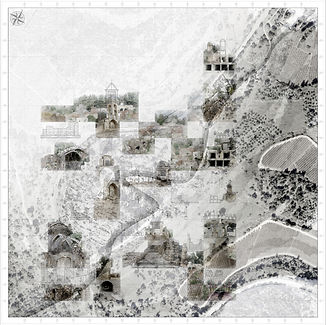
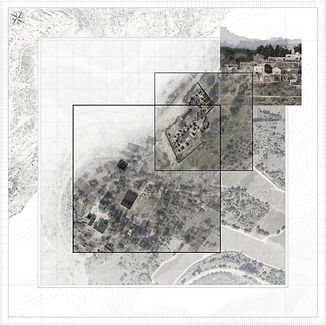
After identifying all of the imprisoned spaces, an attempt was made to produce a plan and section that would present the space with all of its layers over the different time periods.
All the territories that are imprisoned space of the kibbutz and the village.
Some of the spaces occur only once year, such as during the pilgrimage.

At this stage, after understanding that the densest area is the old village, I went to the site for an intervention.
From my analysis, I concluded that time is the most influential factor in the village space, I wanted to allow the ruins to continue to fade, but in such a way that the viewer would be aware of the disappearance.
Before the intervention at the site, it was necessary to understand the physical complexity of the site, and therefore a general mapping of all the ruins in the old village was conducted.
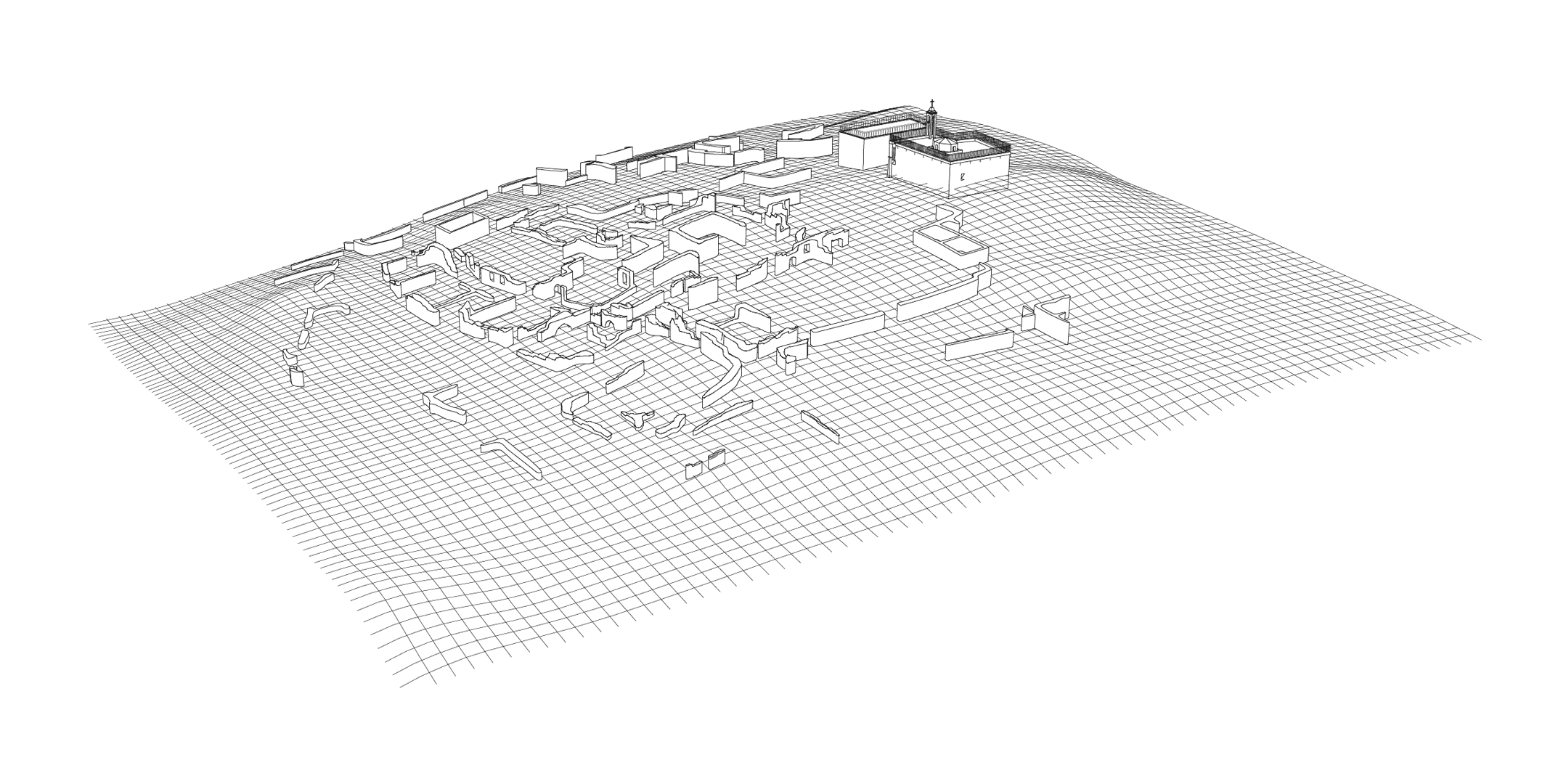
Eventually, the topography, which is the only element that will remain with time, guided the planning for a walkway above the ground, from which the ruins can be observed.
The flow of water at the site, combined with the paths of the ruins, provided a clear route for the walkway.

